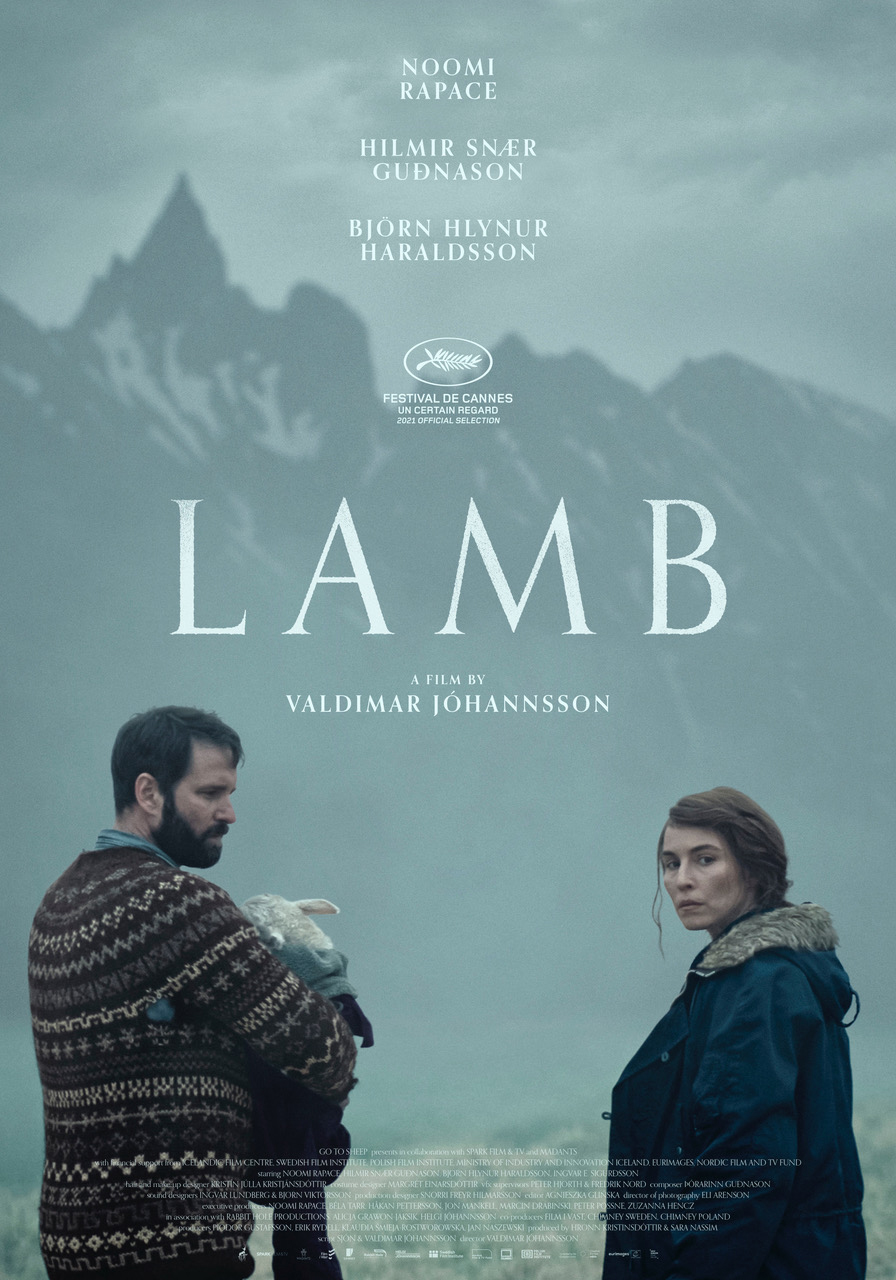“Lamb” follows rural Iceland sheep farmers and their adoption of a hybrid sheep-headed child.
Courtesy of IMDB
Spoiler alert
By Baron Reichenbach
When so many horror movies strive to either reboot bled-dry franchises or terrorize the viewer with jump scares and gore, a film that aims to tenderly disturb and unnerve a la “Suspiria” or “The Shining” can be deeply refreshing.
“Lamb” follows the life of a married couple, María (Noomi Rapace) and Ingvar (Hilmir Snær Guðnason), living as sheep farmers in rural Iceland. One night, a sheep inexplicably gives birth to a hybrid child — with the head of a lamb and body of a human.
The couple ultimately adopts the strange child, naming her Ada after their deceased daughter and raising her as if she was a human child — dressing her up, making her flower crowns and teaching her Icelandic (though she never actually speaks).
Although unsettling, I found the strange family dynamic grew on me by the midpoint of the film — but it is at this point that circumstances bring Ingvar’s brother, Pétur (Björn Hlynur Haraldsson), into the picture, harshly reintroducing reality and a less-than-happy perspective.
It only lasts so long, however, as Pétur too bonds with Ada and becomes a proper uncle to her.
Core to creating the atmosphere of the film is the cinematography, which often leaves critical information deliberately unseen or unspoken. Ada’s hybrid nature is implied for much of the opening chapter, making for a much more striking reveal — and the presence of the creature responsible for her birth is only hinted at with minor details up to the very end, when it shows its face.
The camera work is often entirely still, making each moving shot just a touch more emphasized. “Lamb” proves that a general absence of something makes its appearance all the more striking — almost paralleling the story.
Rapace performs as a well-meaning, but not-quite-okay mother, beginning with her adoption of Ada, and escalating to shooting the child’s sheep mother (who routinely attempts to get Ada back) and locking Pétur in a closet when he makes advances on her, loudly playing the piano to drown out his screams. I found myself rooting for her and being unnerved by her in almost equal measure.
At the climax of the film, the eerie hints sprinkled throughout each chapter finally build to the revelation of Ada’s father — a goat-headed man living in the wilderness, who shoots Ingvar with a stolen rifle, and takes a distraught Ada out into the mountains.
The movie leaves off somewhat unresolved, with María wandering in search of Ada, before the screen jarringly goes to black and credits roll.
Suffice to say, I can never look at sheep the same way again. Thanks, “Lamb.”
[4/5 Stars]



